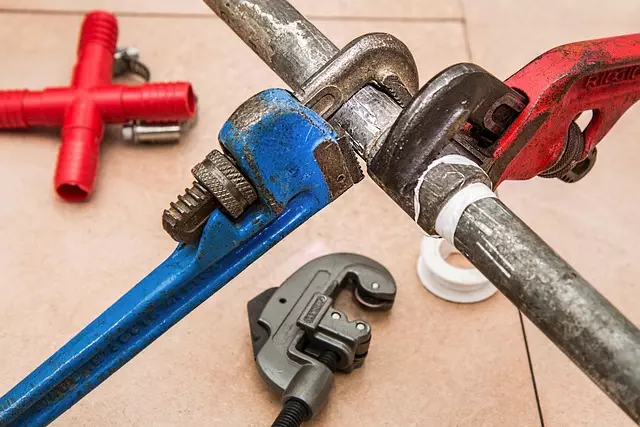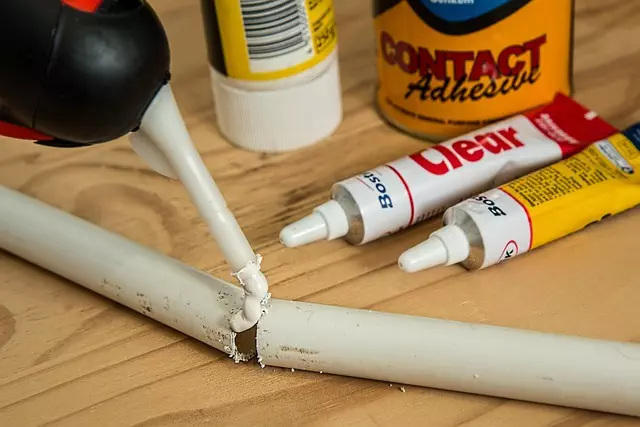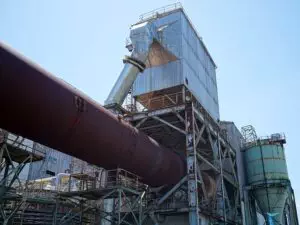Pipe repair is a recurring need in residential and commercial settings due to leaks, pipe bursts, and obstructions. Early identification of issues is crucial for minimizing water waste, mold growth, utility bills, structural damage, and safety risks. Rapid pipe repair solutions are gaining popularity for their efficiency, cost-effectiveness, minimal excavation, and time-saving benefits. Modern technologies like relining and coating have revolutionized traditional, labor-intensive methods. Choosing the right materials, such as PVC, polyethylene, or composite options, is essential for long-lasting repairs that withstand environmental conditions. The repair process involves thorough inspection, safe isolation, removal of damaged sections, installation of new piping, and rigorous leak testing. Common mistakes like DIY repairs or incorrect techniques should be avoided to prevent future issues. Case studies demonstrate the success of advanced repair methods in various scenarios. Future trends include robotic inspections, AI-powered targeting, smart materials, and 3D printing for complex, sustainable repairs.
“In the realm of plumbing, pipe repairs are an inevitable maintenance challenge. However, embracing modern solutions like Fast Pipe Repair Solutions can significantly enhance efficiency and reduce disruptions. This comprehensive guide delves into the heart of common pipe repair issues, highlighting the advantages of rapid repairs over traditional methods.
From understanding material choices to mastering repair techniques, we navigate the landscape of pipe repair innovations. Discover how these advanced solutions are revolutionizing the industry, ensuring longer-lasting fixes. Explore case studies, and stay ahead with insights on future trends in pipe repair.”
Understanding Common Pipe Repair Issues

Pipe repair is a common necessity in both residential and commercial settings, often arising from various issues that can disrupt water supply and cause significant damage. Understanding these common problems is the first step toward effective pipe repair solutions. One of the most frequent challenges is leaks, which can occur due to worn-out joints, corroded pipes, or damaged fittings. These leaks not only waste precious water but also lead to mold growth and higher utility bills.
Another prevalent issue is pipe burst, usually a result of extreme temperature changes, frozen pipes, or poor installation. Burst pipes can cause extensive water damage, structural problems, and even pose safety risks. Additionally, pipe obstructions, such as mineral deposits or debris buildup, can restrict water flow, leading to reduced pressure and potential backflows. Prompt identification of these issues is key to minimizing damage and ensuring efficient, long-lasting pipe repair solutions.
The Benefits of Rapid Pipe Repair Solutions

Rapid pipe repair solutions offer a multitude of benefits, making them an increasingly popular choice for both residential and commercial plumbing needs. Firstly, they significantly reduce downtime associated with traditional repair methods. By quickly identifying and fixing leaks or damages, these solutions prevent water wastage and potential property damage caused by prolonged exposure to moisture.
Moreover, modern pipe repair technologies are cost-effective and efficient. They eliminate the need for extensive excavation, which is often required in conventional repairs. This not only saves time but also minimizes disruptions to daily operations and reduces overall project costs. With their speed, convenience, and affordability, rapid pipe repair solutions provide a reliable and sustainable approach to maintaining plumbing systems.
Traditional vs Modern Repair Methods

In the realm of pipe repair, traditional methods have long been the go-to solution, involving labor-intensive processes and potentially disruptive excavations. These conventional techniques, while effective, often lead to lengthy downtime for businesses and residents due to extensive digging and replacement of damaged sections. However, the advent of modern repair solutions has revolutionized this field, offering faster, more efficient alternatives that minimize disruption.
Modern pipe repair methods leverage innovative technologies and materials, such as relining and coating techniques, which allow for in-place repairs without the need for extensive excavation. These advanced approaches not only reduce project timelines but also enhance the longevity of pipes, providing cost-effective and sustainable solutions for various Pipe Repair needs.
Choosing the Right Materials for Durability

When undertaking pipe repair, selecting the right materials is paramount for ensuring longevity and durability. The market offers a wide array of options, from standard PVC and polyethylene to advanced composite materials. For lasting repairs, it’s crucial to consider factors like environmental conditions, pressure levels, and chemical exposure. High-quality pipes should be resistant to corrosion, UV damage, and extreme temperatures, guaranteeing they can withstand the test of time without compromising integrity.
Choosing materials that align with industry standards and have proven track records in similar applications is wise. Modern composite materials, for instance, offer exceptional strength-to-weight ratios and can mimic traditional pipe properties while offering enhanced durability. This ensures not just effective pipe repair but also reduces the risk of future leaks or breaks, saving time, money, and potential environmental damage.
Steps Involved in Fast Pipe Repair Process

The fast pipe repair process involves several strategic steps designed to minimize disruption and get your plumbing back up and running swiftly. It starts with a thorough inspection to identify the extent of the damage, whether it’s a burst pipe, a leak, or corrosion. This initial assessment guides the selection of the most suitable repair method.
Next, the affected area is isolated to prevent further leakage and ensure safety. This might involve shutting off water valves temporarily. Following this, the damaged section of pipe is carefully removed, taking care not to disturb surrounding structures. Once the old pipe is replaced with a new one, precise jointing techniques are employed to guarantee a watertight seal. Finally, after thorough testing for leaks, the repaired pipe is restored to service, ensuring your plumbing system functions efficiently and reliably once again.
Common Mistakes to Avoid During Repair

When undertaking pipe repair, whether it’s a burst pipe or routine maintenance, there are several common mistakes to avoid that can lead to costly delays and potential damage. One of the biggest blunders is attempting DIY repairs without proper knowledge and tools, especially for complex plumbing systems. Using subpar materials or incorrect techniques can compromise the integrity of the entire pipeline. It’s crucial to identify and address issues like corrosion, loose connections, or damaged valves promptly to prevent further complications.
Another error is neglecting regular inspection and maintenance. Plumbing issues often arise from negligence, such as ignoring persistent leaks, which could lead to water damage and mold growth. Regular checks can help catch problems early, making repairs less invasive and expensive. Additionally, over-tightening fittings or using excessive force during repair can cause stress and potential breaks in the future. Always follow manufacturer guidelines and consider seeking professional advice for intricate pipe repair tasks.
Case Studies: Successful Fast Pipe Repairs

In the realm of fast pipe repair solutions, numerous case studies highlight the successful implementation of innovative techniques. These real-world applications demonstrate the effectiveness of modern tools and methods in tackling urgent pipe issues efficiently. For instance, a recent case involved a bustling metropolis where an aged water distribution network faced sudden breaks, leading to major disruptions. The solution? A swift and precise repair approach utilizing advanced welding technology, which allowed for minimal excavation and rapid restoration of pipeline integrity.
Another compelling story involves a residential area plagued by persistent leaks in ancient sewer lines. Traditional methods proved time-consuming and disruptive to the surrounding ecosystem. However, employing specialized high-pressure pipe repair techniques, experts were able to successfully reinforce weak spots without extensive digging. This not only minimized environmental impact but also saved residents significant costs and inconvenience, showcasing the benefits of contemporary pipe repair solutions.
Future Trends and Innovations in Pipe Repair

The future of pipe repair is poised for significant advancements, driven by innovations in technology and a growing emphasis on sustainability. One prominent trend is the adoption of advanced robotics and AI-powered systems. These technologies enable precise inspection and repair of pipes, even in hard-to-reach areas, reducing the need for invasive methods and minimizing disruptions to surrounding infrastructure. For instance, robotic pipe inspection devices can detect cracks, corrosion, and other defects with remarkable accuracy, paving the way for targeted and less disruptive repair techniques.
Additionally, the integration of smart materials and digital technologies is transforming pipe repair processes. Smart pipes equipped with sensors can monitor internal conditions in real-time, providing valuable data for predictive maintenance. This proactive approach allows for the identification of potential issues before they escalate, thus reducing repair costs and downtime. Furthermore, 3D printing technology offers a game-changing solution for complex repairs, enabling the on-site creation of customized pipe sections to fit unique dimensions and requirements, all while minimizing waste and environmental impact.
